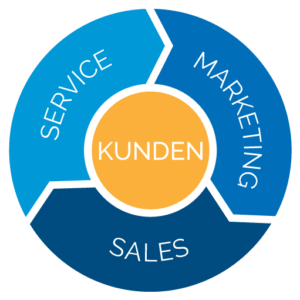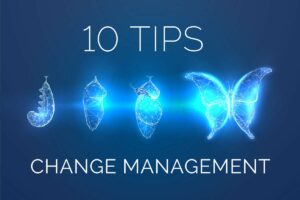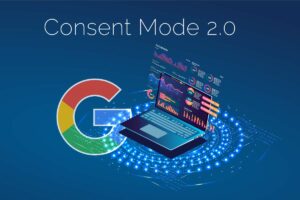Your marketing and sales strategy is no longer producing the results you hoped for? New leads fail to materialize? You may want to try a good mix of inbound and outbound. Here is an overview.
Traditional marketing simply doesn’t work as well anymore. You know this from yourself: You tune out unsolicited advertising. Because it is not focused on your needs and your current situation. Because you are interfering with what you are doing. And yet, many companies still rely on cold calling, print ads, TV commercials, and mass emails for B2B sales. They spend a lot of money – for comparatively little effect.
There is another way. The inbound method produces high-quality, personalized and relevant content. This allows you to generate new leads and customers at significantly lower cost, on a permanent basis, and with a much higher outcome. You continue to use the outbound method – but in a much more targeted and selective way than before..
More inbound and less outbound will improve your lead acquisition and save your budget.
The difference between inbound and outbound
The outbound method
In the outbound method, the initiative comes from the company. It tries to find new leads and customers through a wide range of measures. It sends out its messages independently of concrete needs of specific buyers at specific times. The company determines when it is heard or seen. Potential customers are thus also played on unintentionally.
The inbound method
In the inbound method, it’s the other way around: here, the customer takes the initiative to find the company that can solve their problem or answer their question. The buyer determines what he wants to hear and see and when. Using content that offers real added value, the customer independently finds his way to the seller’s website. Here he finds what he is looking for.
The benefits of inbound for customer acquisition
- Lower costs: Inbound costs significantly less and is unlimited in time.
- Inbound campaigns: Outbound relies on the “big bang” and attracts attention with temporary campaigns that quickly fizzle out. Inbound campaigns run continuously.
- Shorter sales calls: Because the customer is already well pre-informed with the inbound methodology and knows exactly what his needs are, sales calls become shorter. Your sales team saves “empty miles”.
- More time: This leaves more time for the after-sales process.
- Collaboration between marketing and sales: In the inbound model, marketing and sales work closely together throughout the entire acquisition process – from lead acquisition and activation to customer retention, revenue generation, and referral.

- Visible optimization potential: In addition, the Pirate Metric provides support as an optimal control and monitoring tool. It quickly reveals optimization potential in the individual phases of the acquisition and sales process.
- Optimized customer acquisition: Thus, customer acquisition using the inbound method in the sense of the Flywheel model is gaining more and more momentum. Customers become enthusiastic, loyal regular customers and recommend the company to others.

The faster the flywheel turns, the less energy you have to use yourself to generate leads. Your customers do that for you.
The channels for inbound and outbound
Depending on the market, product and target group, there are different approaches and so-called traction channels in customer acquisition. A traction channel is a channel to reach leads and customers in the best possible way.
Which channel is different for each company and cannot be determined by industry. The rule of thumb – especially in B2B sales – is: more inbound than outbound.
The most important traction channels at a glance

Our tip: A contemporary mix of inbound and outbound methods, geared to buyer behavior, places the core competence on valuable content according to the inbound methodology. For example:
- Instead of – or in addition to – classic TV commercials, produce videos and post them on YouTube. You place them on social media, link to your website or a landing page for your product. On the website you offer a contact form or a telephone number so that interested parties can get in touch with you directly.
- Instead of elaborately organized trade shows and events – or alternating between them – host webinars. You offer them free of charge as “knowledge nuggets” and thus demonstrate your competence. Following the webinar, post a summary on your website (blog).
For each target group, there is an appropriate Traction Channel that is best suited for marketing and attracting new customers.
If you would like assistance in developing the right mix of inbound and outbound, we will be happy to advise you and help you reach your potential customers in the best possible way.
Until the next update – your Growth Ninjas,
Adrienne, David, Hermann, Johannes, Katharina B., Stefan K. & Stefan G.



